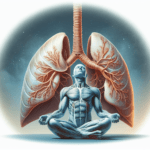
Living with chronic obstructive pulmonary disease (COPD) can be challenging, especially when it comes to managing exacerbations and avoiding hospital readmissions. Fortunately, there are steps you can take to decrease the likelihood of these events and improve your overall quality of life. From adopting healthy lifestyle habits to staying on top of your medication regimen, this article will provide you with practical tips and strategies to reduce COPD exacerbations and hospital readmissions. So, buckle up and get ready to take control of your COPD journey.

Understanding COPD Exacerbations
Definition of COPD exacerbation
COPD exacerbation refers to a sudden worsening of the symptoms associated with chronic obstructive pulmonary disease (COPD). It often includes increased shortness of breath, coughing, wheezing, and chest tightness. Exacerbations can be triggered by various factors, such as respiratory infections, exposure to pollutants, or failure to adhere to medication regimens. These exacerbations can significantly impact the quality of life for individuals with COPD and can even lead to hospitalization if not properly managed.
Causes of COPD exacerbations
COPD exacerbations can be triggered by a variety of factors. One common cause is respiratory infections, such as the flu or pneumonia. Exposure to environmental pollutants, both indoors and outdoors, can also contribute to exacerbations. Smoking and secondhand smoke are major irritants that can worsen symptoms and increase the frequency of exacerbations. Additionally, failure to adhere to medication regimens or improper use of inhalers and nebulizers can lead to exacerbations.
Impact of exacerbations on COPD patients
Exacerbations of COPD can have a significant impact on the lives of those affected. They can result in increased difficulty breathing, decreased lung function, and reduced ability to perform daily activities. Exacerbations often require medical intervention, including hospitalization, and can lead to a decline in overall health. They can also lead to a deteriorating mental state, as the fear and anxiety associated with exacerbations can cause stress and emotional strain. Therefore, it is crucial for individuals with COPD to understand the triggers and learn strategies to prevent exacerbations.
Identifying Triggers
Common triggers for COPD exacerbations
There are several common triggers that can lead to COPD exacerbations. While triggers can vary from person to person, it is important to be aware of the most common ones. These include respiratory infections, exposure to environmental factors, smoking and secondhand smoke, and air pollution. By identifying these triggers, individuals can take proactive steps to avoid or minimize their impact, thus reducing the risk of exacerbations.
Environmental factors
Environmental factors such as dust, mold, and pet dander can irritate the airways and trigger exacerbations in people with COPD. It is important to keep living spaces clean and free from potential allergens. Regular dusting, vacuuming with a HEPA filter, and using air purifiers can help reduce the presence of these irritants.
Smoking and secondhand smoke
Smoking is one of the leading causes of COPD and can significantly worsen symptoms and increase the frequency of exacerbations. Quitting smoking is essential for managing COPD and reducing the risk of exacerbations. Equally important is avoiding exposure to secondhand smoke, as it can also irritate the airways and trigger symptoms. Creating smoke-free environments and seeking support to quit smoking are crucial steps in preventing exacerbations.
Respiratory infections
Respiratory infections, such as influenza and pneumonia, are common triggers for COPD exacerbations. It is important to practice good hand hygiene, receive annual flu vaccines, and get the pneumonia vaccine as recommended by healthcare professionals. Avoiding close contact with sick individuals, especially during flu season, can also help reduce the risk of respiratory infections and subsequent exacerbations.
Air pollution
Outdoor air pollution can worsen COPD symptoms and trigger exacerbations. It is advisable to avoid outdoor pollution hotspots, such as busy roads or industrial areas, especially during high pollution levels. Monitoring air quality indexes and using masks when air pollution is severe can also help reduce the risk of exacerbations. Additionally, reducing indoor pollution through proper ventilation, using air purifiers, and avoiding exposure to smoke from stoves or fireplaces can further contribute to preventing exacerbations.

Developing an Action Plan
Importance of an action plan
Having an action plan in place is crucial for individuals with COPD to manage and reduce the risk of exacerbations. An action plan outlines the steps that need to be taken in the event of worsening symptoms, providing a clear guide on how to manage exacerbations. This plan helps individuals take prompt action, potentially preventing the need for hospitalization and improving overall outcomes.
Working with healthcare professionals
Developing an action plan should be done in collaboration with healthcare professionals, such as pulmonologists or respiratory therapists. These professionals can provide guidance on personalizing the plan based on individual needs and circumstances. They can also educate individuals on how to recognize early warning signs of exacerbations and take appropriate measures to prevent further deterioration of symptoms.
Key components of an action plan
An effective action plan for COPD exacerbations typically includes several key components. These may include instructions on when to increase the use of rescue medications, when to contact healthcare professionals, and emergency contact information. It may also involve strategies for managing symptoms at home, such as breathing exercises or self-monitoring techniques. Regular reassessment and adjustments to the action plan may be necessary to ensure its effectiveness in preventing exacerbations.
Understanding medication management
Proper medication management is a critical aspect of preventing COPD exacerbations. It involves adhering to prescribed medications, including bronchodilators and corticosteroids, as directed by healthcare professionals. Inhalers and nebulizers are commonly used to deliver these medications to the airways. Adherence to the medication regimen, both in terms of timing and proper technique, can significantly reduce the risk of exacerbations. Furthermore, having emergency medications readily available can help manage exacerbations promptly and effectively.
Medication Strategies
Prescribed medications for COPD
COPD is typically managed with a combination of medications, tailored to the individual’s needs. Bronchodilators, which can be short-acting or long-acting, help relax and open up the airways, making breathing easier. Corticosteroids, either inhaled or oral form, reduce inflammation in the airways, thereby alleviating symptoms. Depending on the severity of COPD, healthcare professionals may prescribe a variety of medications to manage symptoms and reduce the risk of exacerbations.
Inhalers and nebulizers
Inhalers and nebulizers are common devices used to deliver medication directly to the airways. Inhalers are handheld devices that deliver a metered dose of medication, which is then inhaled. Nebulizers, on the other hand, convert medication into a fine mist that can be inhaled through a mask or mouthpiece. Both devices are effective in delivering medication to the lungs, but proper technique and understanding of each device’s instructions are essential for optimal results.
Bronchodilators and corticosteroids
Bronchodilators, such as beta-agonists and anticholinergics, work by relaxing the muscles around the airways, helping to open them up and improve airflow. Corticosteroids, on the other hand, reduce inflammation in the airways, thereby reducing symptoms and the risk of exacerbations. In some cases, combination medications that contain both bronchodilators and corticosteroids may be prescribed to provide comprehensive management of COPD symptoms.
Adherence to medication regimen
Adherence to the prescribed medication regimen is vital in preventing COPD exacerbations. It is important to take medications as directed by healthcare professionals, including the correct dosage and at the recommended times. Proper technique in using inhalers and nebulizers is also crucial for the effective delivery of medication. Regular communication with healthcare professionals to address any concerns or difficulties with medication management is essential for optimal COPD management.
Emergency medications
In addition to regular medications, individuals with COPD should have access to emergency medications for exacerbations. These may include short-acting bronchodilators and oral corticosteroids. The quick relief provided by these medications can help manage worsening symptoms and potentially prevent the need for hospitalization. Understanding when and how to use emergency medications is important for individuals with COPD to have prompt access to relief during exacerbations.

Lifestyle Modifications
Quitting smoking
Quitting smoking is one of the most important steps individuals with COPD can take to reduce the frequency and severity of exacerbations. Smoking exacerbates COPD symptoms, damages the lungs, and increases the risk of respiratory infections. Joining smoking cessation programs, seeking support from healthcare professionals or support groups, and utilizing nicotine replacement therapies can greatly increase the chances of successfully quitting smoking.
Avoiding exposure to pollutants
Reducing exposure to pollutants, both indoors and outdoors, is crucial in preventing exacerbations. Individuals with COPD should avoid secondhand smoke and ensure their living spaces are clean and free from potential irritants. Proper ventilation, regular cleaning, and using air purifiers can help minimize exposure to indoor pollutants such as dust, mold, and pet dander. Similarly, avoiding outdoor pollution hotspots and monitoring air quality levels can significantly reduce the risk of exacerbations.
Regular physical exercise
Engaging in regular physical exercise can have numerous benefits for individuals with COPD. Exercise helps strengthen the muscles involved in breathing, improves overall lung function, and enhances stamina. Additionally, physical activity can improve mood and mental well-being, which is particularly crucial for individuals with COPD who may experience anxiety or depression. Following a personalized exercise plan recommended by healthcare professionals is important to ensure safe and effective exercise.
Managing stress and anxiety
Stress and anxiety can worsen COPD symptoms and increase the risk of exacerbations. Managing stress through relaxation techniques, such as deep breathing exercises, meditation, or mindfulness, can help individuals cope with the emotional impact of COPD. Seeking support from healthcare professionals, therapists, or support groups can also provide valuable tools and strategies to manage stress and anxiety effectively.
Getting vaccinated
Vaccination against respiratory infections is an important preventive measure for individuals with COPD. Annual influenza vaccines help reduce the risk of contracting the flu, which can lead to exacerbations. Additionally, the pneumonia vaccine is recommended for individuals with COPD to protect against pneumococcal infections. Keeping up-to-date with vaccinations, as recommended by healthcare professionals, can significantly reduce the risk of respiratory infections and subsequent exacerbations.
Avoiding Respiratory Infections
Importance of hand hygiene
Practicing good hand hygiene is crucial for preventing respiratory infections, which are common triggers for COPD exacerbations. Regularly washing hands with soap and water for at least 20 seconds, especially before touching the face or eating, can help minimize the risk of infection. If soap and water are not available, using alcohol-based hand sanitizers can provide temporary protection.
Getting influenza and pneumonia vaccines
Annual influenza vaccines and the pneumonia vaccine are recommended for individuals with COPD to prevent respiratory infections. Influenza vaccines are typically administered each flu season and help protect against the most prevalent strains of the virus. The pneumonia vaccine provides protection against pneumococcal infections, a common cause of pneumonia. Keeping up-to-date with vaccinations is an essential strategy in reducing the risk of respiratory infections.
Avoiding contact with sick individuals
Minimizing contact with individuals who are sick, especially during flu season, is crucial in preventing respiratory infections. Crowded places, such as shopping malls or public transportation, can increase the risk of exposure to infectious agents. Maintaining distance from infected individuals, practicing proper respiratory etiquette, such as covering the nose and mouth when coughing or sneezing, and avoiding close contact can help reduce the risk of respiratory infections and subsequent exacerbations.
Using masks or avoiding crowded places
Wearing masks, particularly during flu seasons or times of high pollution, can provide an additional layer of protection against respiratory infections. Masks can help filter out airborne particles and reduce the risk of inhaling infectious agents. It is important to choose masks that fit properly and are rated for particulate filtration. Alternatively, individuals with COPD may choose to limit their exposure to crowded places, especially during peak infection periods.
Preventing Air Pollution Exposure
Indoor pollution reduction techniques
Reducing indoor air pollution is essential for individuals with COPD to prevent exacerbations. Simple techniques such as keeping windows open for ventilation, using exhaust fans in the kitchen and bathroom, and regularly cleaning and dusting can help minimize the presence of indoor pollutants. Avoiding smoke from stoves or fireplaces and using air purifiers with high-efficiency particulate air (HEPA) filters further contribute to reducing indoor pollution levels.
Avoiding outdoor pollution hotspots
Outdoor air pollution can significantly worsen COPD symptoms and trigger exacerbations. Individuals with COPD should avoid areas with high levels of air pollution, such as busy roads, industrial areas, or places with active wildfires. Checking air quality indexes, especially during periods of increased pollution, can help individuals make informed decisions about outdoor activities and reduce the risk of exacerbations.
Using air purifiers and ventilation systems
Using air purifiers with HEPA filters can help remove airborne particles and allergens, improving indoor air quality. These devices can be particularly beneficial for individuals with COPD, as they can reduce the presence of irritants that trigger exacerbations. Additionally, ensuring proper ventilation in living spaces, particularly in kitchens and bathrooms, can help remove pollutants and improve indoor air quality.
Monitoring air quality levels
Regularly monitoring air quality levels in the local area can provide individuals with COPD valuable information about potential triggers. Numerous websites and mobile applications provide real-time air quality data, including pollutant levels and air quality indexes. Being aware of air quality levels allows individuals to take proactive measures, such as avoiding outdoor activities or wearing masks, during periods of increased pollution, thus reducing the risk of exacerbations.
Pulmonary Rehabilitation Programs
Benefits of pulmonary rehabilitation
Pulmonary rehabilitation programs play a crucial role in improving the overall well-being and quality of life for individuals with COPD. These programs typically involve a combination of exercise training, education, and psychological support. The benefits of pulmonary rehabilitation include increased exercise tolerance, reduced breathlessness, improved muscle strength, and enhanced knowledge and skills for managing COPD. Participation in pulmonary rehabilitation can also reduce hospital admissions and exacerbations, ultimately leading to better disease management.
Exercise and physical therapy
Physical exercise is a key component of pulmonary rehabilitation programs. These exercises are designed to improve lung function, reduce breathlessness, and strengthen the muscles involved in breathing. Exercises may include aerobic activities, such as walking or cycling, as well as strength training exercises targeting the upper and lower body. Additionally, respiratory muscle training and breathing exercises are often incorporated to improve breathing techniques and enhance overall lung function.
Educational sessions
Educational sessions in pulmonary rehabilitation programs provide individuals with COPD essential knowledge about their condition, exacerbation prevention strategies, and self-management techniques. These sessions cover topics such as proper inhaler technique, medication management, recognizing early warning signs of exacerbations, and effective breathing techniques. Empowering individuals with knowledge enables them to actively participate in their own care and make informed decisions to prevent exacerbations.
Psychological support
Managing the psychological impact of COPD is equally important in preventing exacerbations. Pulmonary rehabilitation programs often provide psychological support through counseling or support group sessions. These sessions aim to address the emotional challenges of living with a chronic condition, such as anxiety, depression, and fear. By addressing these mental health concerns and providing coping strategies, individuals can better manage stress, improve overall well-being, and reduce the risk of exacerbations.
Regular Medical Follow-ups
Importance of regular check-ups
Regular medical follow-ups are essential for individuals with COPD to monitor their condition and prevent exacerbations. These check-ups allow healthcare professionals to assess lung function, evaluate the effectiveness of the current treatment plan, and make any necessary adjustments. Regular follow-ups also provide an opportunity for individuals to discuss any new symptoms, concerns, or difficulties managing their COPD. Open communication with healthcare professionals fosters a collaborative approach to managing COPD and helps prevent exacerbations.
Monitoring lung function
Monitoring lung function, typically through spirometry tests, is an important aspect of regular medical follow-ups for individuals with COPD. These tests measure the amount of air an individual can forcefully exhale after taking a deep breath and provide valuable information about lung function. By regularly assessing lung function, healthcare professionals can identify any decline in lung function early on and adjust treatment plans accordingly, thus reducing the risk of exacerbations.
Adjusting treatment plans
Dynamic treatment plans that are adjusted based on individual needs and changing conditions are crucial for preventing exacerbations. Regular medical follow-ups allow healthcare professionals to evaluate the effectiveness of the current treatment plan and make any necessary adjustments. This may involve changes in medication dosage, additional therapies, or incorporating new management strategies. With timely adjustments, individuals can better manage their COPD and reduce the risk of exacerbations.
Addressing concerns or new symptoms
Regular medical follow-ups provide individuals with COPD an opportunity to discuss any concerns or new symptoms they may be experiencing. It is important to openly communicate with healthcare professionals about any changes in symptoms, difficulties with medication management, or any emotional challenges. Addressing concerns promptly allows healthcare professionals to provide appropriate guidance and support, potentially preventing exacerbations and ensuring optimal disease management.
Support System and Self-care
Building a strong support system
Having a strong support system is crucial for individuals with COPD in managing their condition and preventing exacerbations. This support system may include family members, friends, or healthcare professionals who can provide emotional support and assistance in daily activities. Regular communication with the support system allows for continuous monitoring of symptoms and prompt action in case of exacerbations. Individuals with COPD should not hesitate to reach out for help when needed, as a strong support system can significantly contribute to better disease management.
Joining support groups
Joining support groups for individuals with COPD can provide additional sources of support and valuable insights into managing the condition. Support groups offer a platform for individuals to share experiences, ask questions, and learn from others who have faced similar challenges. By connecting with others in similar situations, individuals can gain a sense of community and find comfort in knowing they are not alone. Support groups also provide opportunities to learn about new strategies, coping mechanisms, and resources for managing COPD effectively.
Self-management techniques
Self-management techniques are skills and strategies that individuals with COPD can incorporate into their daily routine to effectively manage their condition and prevent exacerbations. These techniques may include proper medication management, adhering to action plans, practicing breathing exercises, staying physically active, and taking steps to minimize exposure to triggers. Regular self-monitoring of symptoms and recognizing early warning signs of exacerbations also play a crucial role in effective self-management.
Daily symptom monitoring
Monitoring symptoms on a daily basis allows individuals with COPD to identify any changes or early warning signs of exacerbations. Keeping a symptom diary or using smartphone applications designed for COPD management can help track symptoms and identify patterns or triggers. Recognizing changes in symptoms promptly allows individuals to take immediate action, such as increasing medication use or contacting healthcare professionals, potentially preventing exacerbations and minimizing their impact.
Knowing when to seek medical help
It is important for individuals with COPD to know when to seek medical help. Certain symptoms, such as increased shortness of breath, chest pain, confusion, or bluish lips or fingernails, may indicate a severe exacerbation that requires immediate medical attention. In such cases, individuals should contact emergency services or visit the nearest emergency department. It is always better to be cautious and seek prompt medical help to prevent exacerbations from escalating and worsening the individual’s condition.









